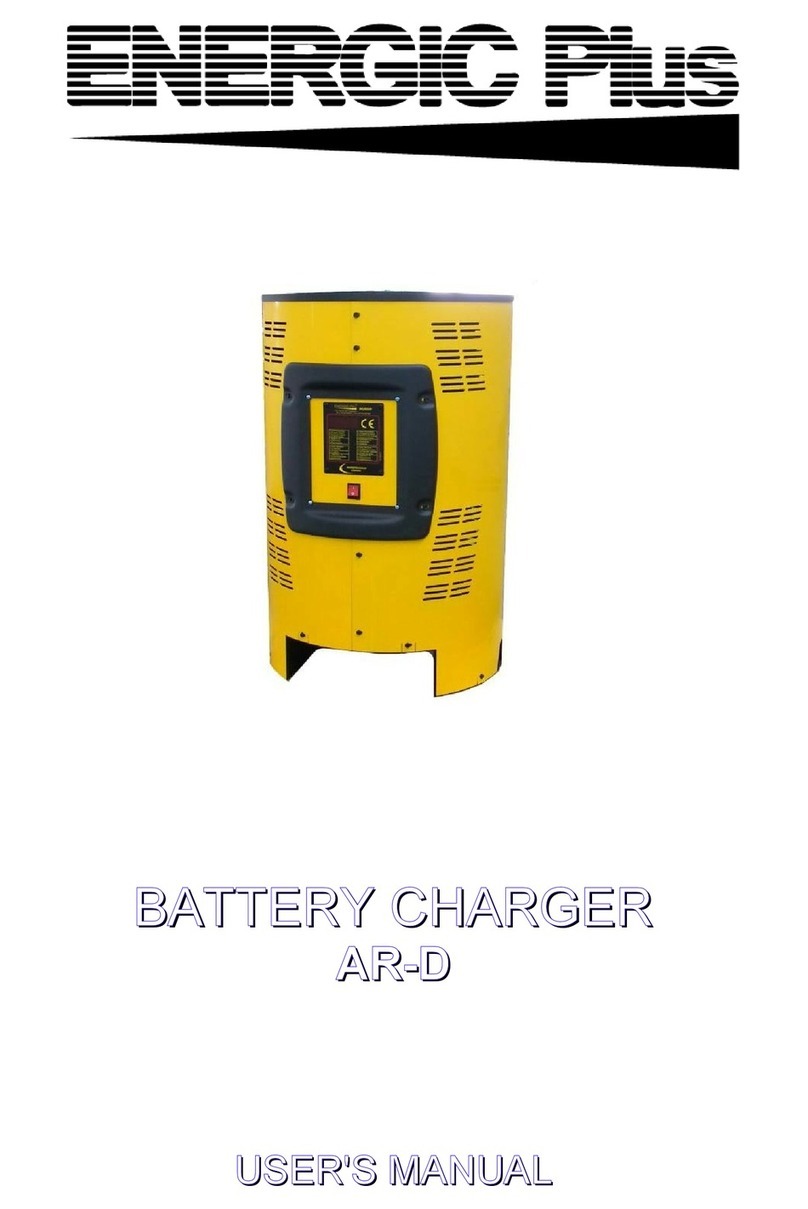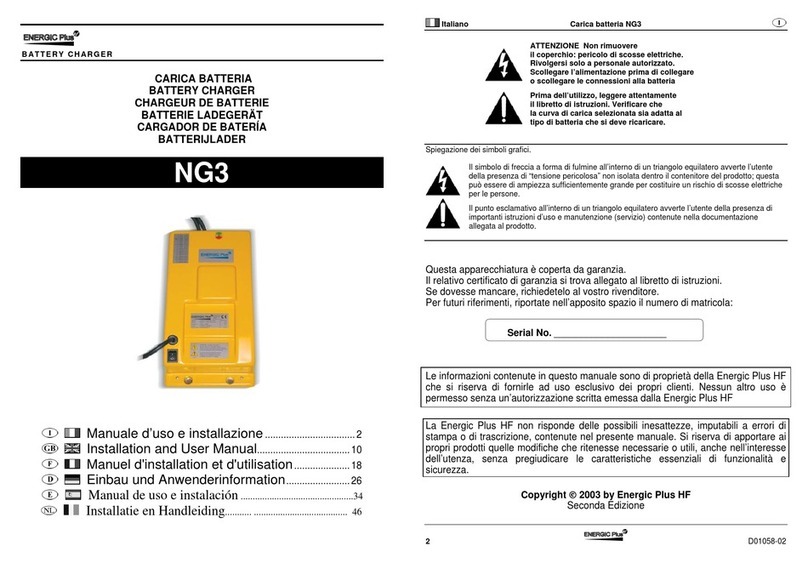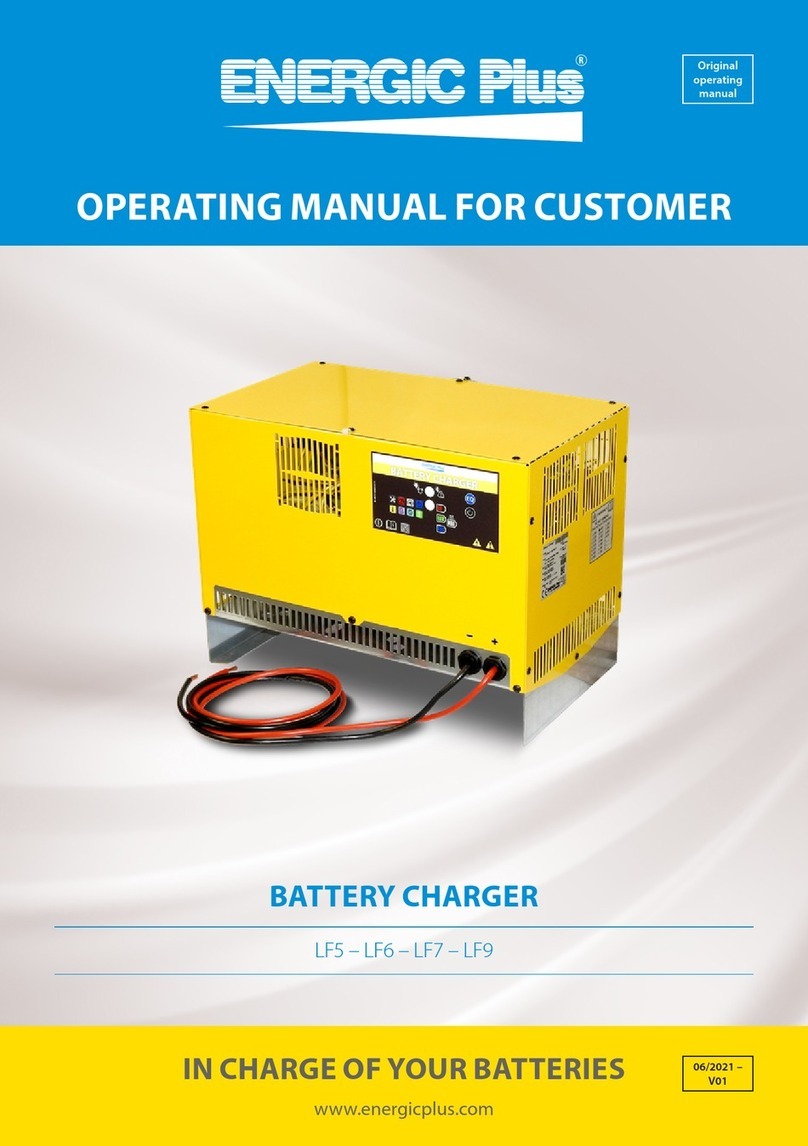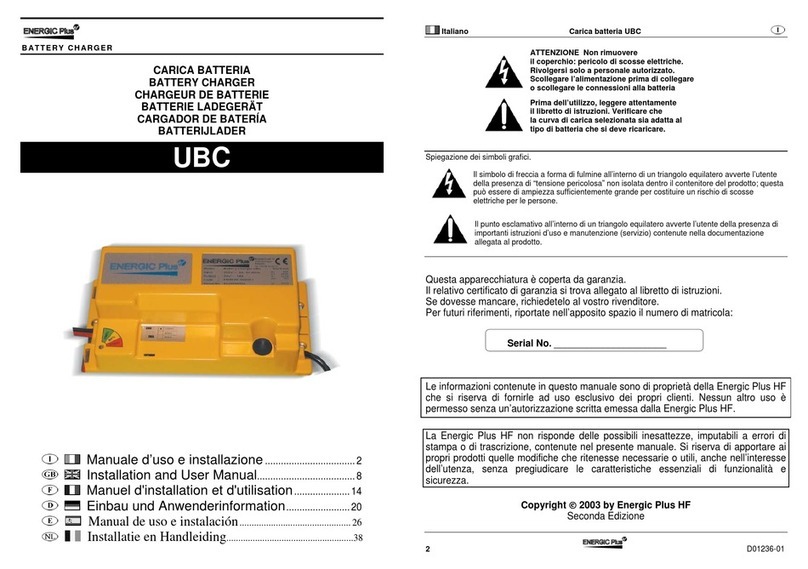Energic Plus TSS-D User manual

[0203072TSS] TSS-D Battery Chargers r1
User's Manual
TSS - D
Battery Chargers
USER'S MANUAL
V1.0 – Jan. 2017
www.energicplus.com
__________________________________________________________________________________________________________________________________________________
Page 1/19

[0203072TSS] TSS-D Battery Chargers r1
User's Manual
1. SAFETY INSTRUCTIONS AND WARNINGS
Before to start using your battery charger, please take the time to read these instructions
carefully.
The owner’s manual is an important part of the charger. It’s recommended to keep it in good
condition for the lifetime of the charger. It should be kept in a dry and clean place, always
available to the users.
To indicate important instructions, the following blocks are used throughout this manual.
GENERAL
Battery charging products can cause serious injury or death, or damage to other equipment or
property, if the operator does not strictly observe all safety rules and take precautionary
actions.
Safe practices must be learned through study and training before using this equipment.
Only qualified personnel should install, use, or service this equipment.
SHOCK PREVENTION
Bare conductors, or terminals in the output circuit, or ungrounded, electrically-live
equipments can fatally shock a person. To protect against shock, have competent electrician
verify that the equipment is adequately grounded and learn what terminals and parts are
electrically HOT.
The body’s electrical resistance is decreased when wet, permitting dangerous current to flow
through the body. Do not work in damp area without being extremely careful. Stand on dry
rubber mat or dry wood and use insulating gloves when dampness or sweat cannot be
avoided. Keep clothing dry.
INSTALLATION AND GROUNDING - A power disconnect switch must be located at the
equipment. Check the data label for voltage and phase requirements. If only 3-phase power is
available, connect single-phase equipment to ONLY TWO WIRES of the 3-phase line.
DO NOT CONNECT the equipment grounding conductor to the third live wire of the 3-phase
line as this makes the equipment frame electrically HOT, which can cause a fatal shock.
If a grounding conductor is part of the power supply cable, be sure to connect it to a properly
grounded switch box or building ground. If not part of the supply cable, use a separate
grounding conductor. Don’t remove a ground prong from any plug. Use correct mating
receptacles. Check ground for electrical continuity before using equipment. The grounding
conductor must be of a size equal to or larger than the size of the line conductors.
CHARGING LEADS – Inspect leads often for damage to the insulation. Replace or repair
cracked or worn leads immediately. Use leads having sufficient capacity to carry the operating
current without overheating. Don't replace the original cables with longer cables.
Don't use additional cables to lenghten the original connections.
__________________________________________________________________________________________________________________________________________________
Page 2/19
CAUTION!
This operation can be dangerous for the user.
ATTENTION!
This operation is important for the functionality and reliability of the charger.

[0203072TSS] TSS-D Battery Chargers r1
User's Manual
BATTERY TERMINALS – Do not touch battery terminals while equipment is operating.
SERVICE AND MAINTENANCE – Shut OFF all power at the disconnect switch or line breaker
BEFORE inspecting, adjusting, or servicing the equipment. Lock switch OPEN (or remove line
fuses) so that the power cannot be turned ON accidentally.
Disconnect power to equipment if it is to be left unattended or out of service. Disconnect
battery from charger. Keep inside parts clean and dry. Dirt and/or moisture can cause
insulation failure. This failure can result in high voltage at the charger output.
BURN AND BODILY INJURY PREVENTION
The battery produces very high currents when short circuited, and will burn the skin severely
if in contact with any metal conductor that is carrying this current.
Do not permit rings on fingers to come in contact with battery terminals or the cell connectors
on top of the battery. Battery acid is very corrosive. Alwais wear correct eye and body
protection when near batteries.
FIRE AND EXPLOSION PREVENTION
When batteries are being recharged, they generate hydrogen gas that is explosive in certain
concentrations in air (the flammability or explosive limits are 4.1% to 72% hydrogen in air).
The spark-retarding vents help slow the rate of release of hydrogen, but the escaping
hydrogen may form an explosive atmosphere around the battery if ventilation is poor.
The ventilation system should be designed to provide an adequate amount of fresh air for the
number of batteries being charged. This is essential to prevent an explosion.
Always keep sparks, flames, burning cigarettes, and other sources of ignition away from the
battery recharging area. Do not break "live" circuits at the terminals of batteries. Do not lay
tools or anything that is metallic on top of any battery.
ARCING AND BURNING OF CONNECTOR
To prevent arcing and burning of the connector contacts, be sure the charger is OFF before
connecting or disconnecting the battery. The ammeter should NOT indicate current flow.
MEDICAL AND FIRST AID TREATMENT
First aid facilities and a qualified first aid person should be available for each shift for
immediate treatment of electrical shock victims.
EMERGENCY FIRST AID: Call phisician and ambulance immediately and use First Aid
techniques recommended by the American Red Cross.
DANGER: ELECTRICAL SHOCK CAN BE FATAL.
If person is unconscious and electric shock is suspected, do not touch person if he or she is
in contact with charging equipment, battery, charging leads, or other live electrical parts.
Disconnect power at wall switch and then use First Aid.
Dry wood, wooden broom, and other insulating material can be used to move cables, if
necessary, away from person.
IF BREATHING IS DIFFICULT, give oxygen.
IF NOT BREATHING, BEGIN ARTIFICIAL BREATHING, such as mouth-to-mouth.
IF PULSE IS ABSENT, BEGIN ARTIFICIAL CIRCULATION, such as external heart massage.
In case of acid in the eyes, flush very well with clean water and obtain professional medical
attention immediately.
__________________________________________________________________________________________________________________________________________________
Page 3/19

[0203072TSS] TSS-D Battery Chargers r1
User's Manual
2. DESCRIPTION OF THE CHARGER
The battery chargers have been designed to charge Pb batteries.
These units convert the AC main supply in a DC output at the correct voltage, in order to
charge the battery cells.
The microprocessor controlled electronic card is used to monitor the state of the charge, and
automatically turn the charger off when the battery is fully charged.
The charge current follows the Wa curve, and the operation is fully automatic.
__________________________________________________________________________________________________________________________________________________
Page 4/19

[0203072TSS] TSS-D Battery Chargers r1
User's Manual
3. INSTALLATION OF THE CHARGER
Conditions of use:
•Operating temperature: 5°C to 45°C
•Storage temperature: -20°C to 60°C
•Relative humidity: less than 75%
__________________________________________________________________________________________________________________________________________________
Page 5/19
CAUTION!
Risk of electrical shock!
The charger can be installed by qualified personnel only.
To prevent fire or shock hazard, do not expose the unit to rain or moisture.
Don't use the unit in presence of flammable gas, because it can generate sparks.
ATTENTION!
Make sure that the unit's maximum input power (reported on the data label) is available from
your power supply, and verify that the unit's operating voltage is correct.
Allow adequate air circulation to prevent internal heat buildup.
Don't place the unit near heat sources such as radiators or air ducts, or in a place subject to
direct sunlight, excessive dust, mechanical vibration or shock.
ATTENTION!
The proper setting of the power transformer taps is fundamental
for the correct operation of the charger.
If the real AC input voltage is different than the AC nominal voltage to which the charger is set,
the charging current of the charger may be significantly different than the nominal.
NOTE
The BOARD FOR INPUT VOLTAGE SELECTION is present only in chargers with
3x 208 / 240 / 480 Vac input, and it's NOT present in chargers with 3x600 Vac input.
The PLUGS FOR INPUT VOLTAGE ADJUSTMENT are present in all the chargers.
Table of contents
Other Energic Plus Batteries Charger manuals
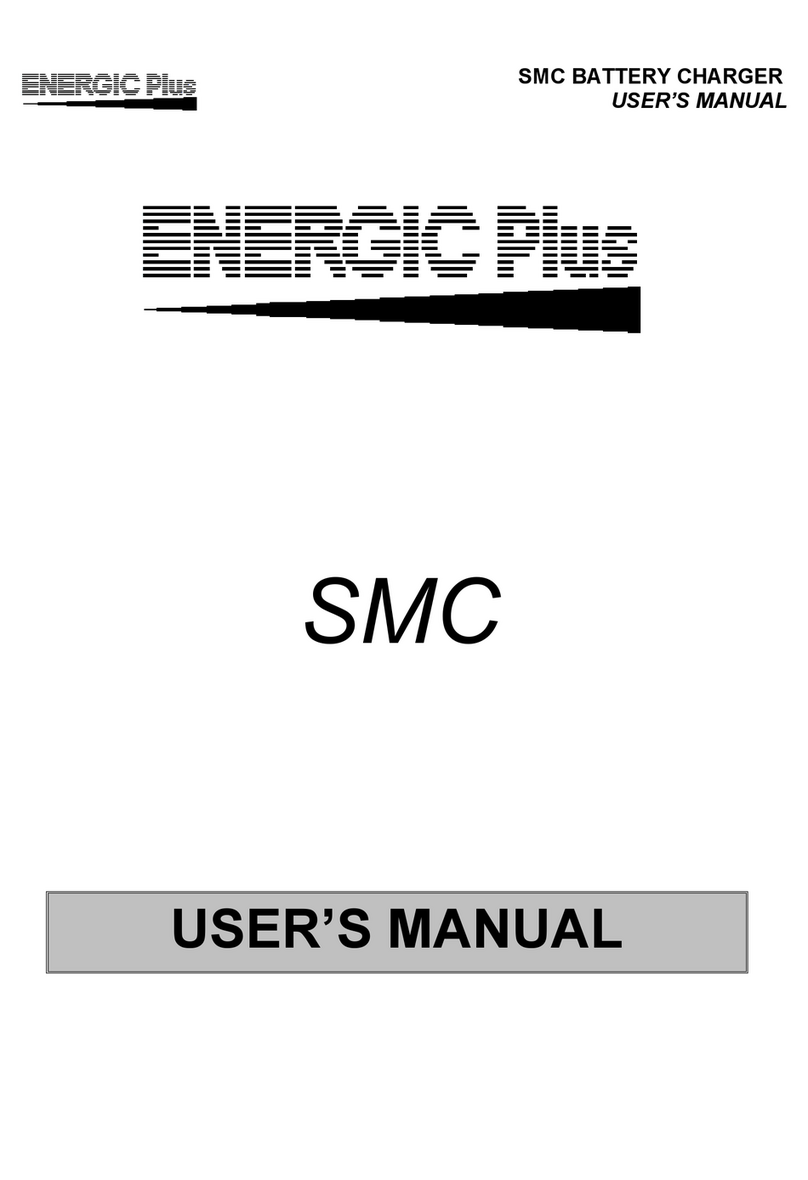
Energic Plus
Energic Plus SMC User manual
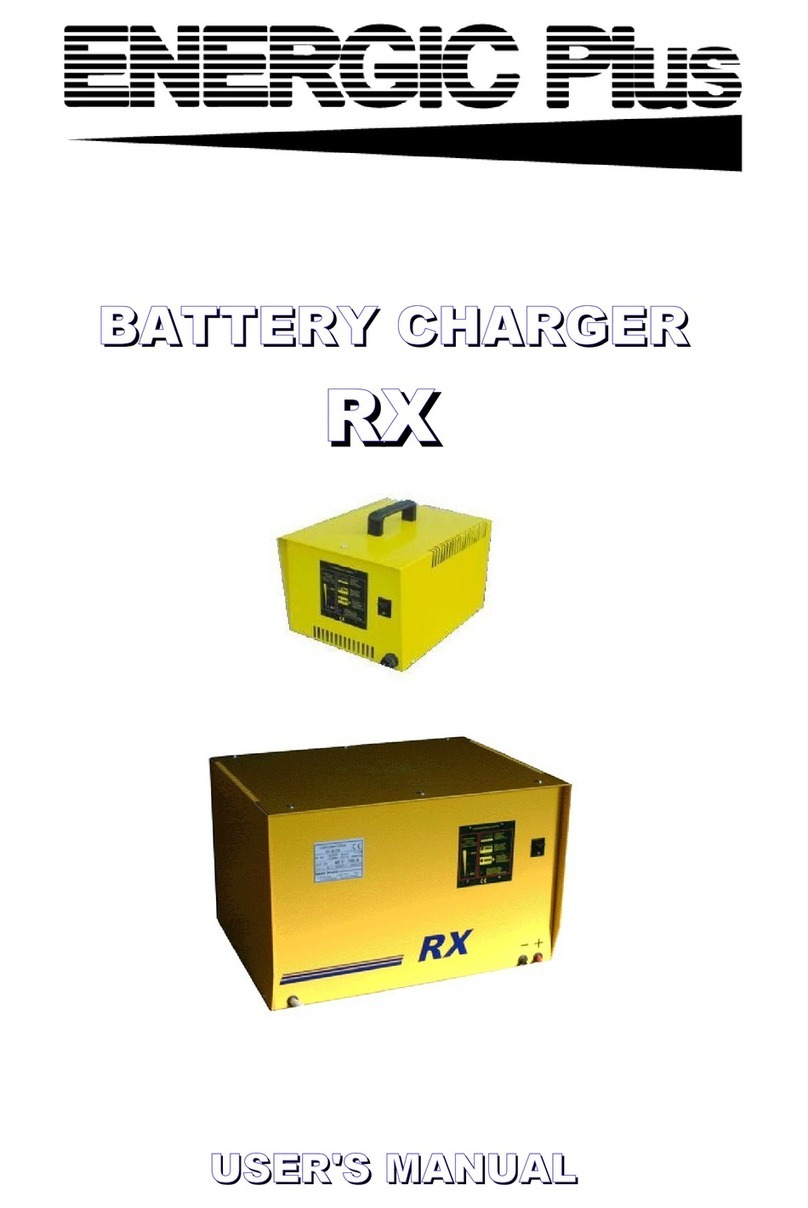
Energic Plus
Energic Plus RX User manual
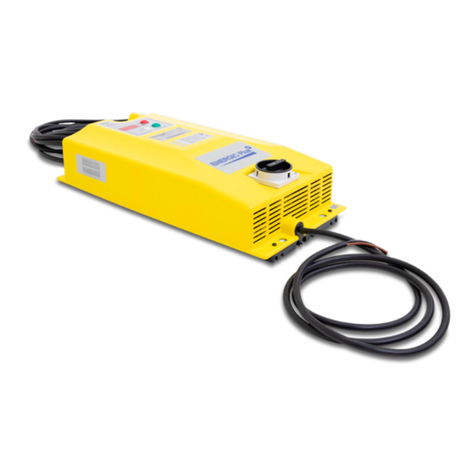
Energic Plus
Energic Plus NG1 User manual

Energic Plus
Energic Plus 124TA1705 User manual
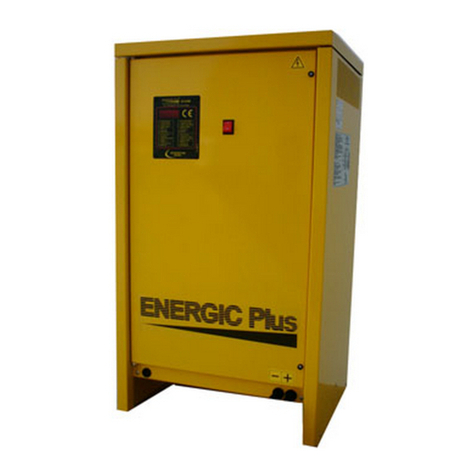
Energic Plus
Energic Plus TST-D User manual
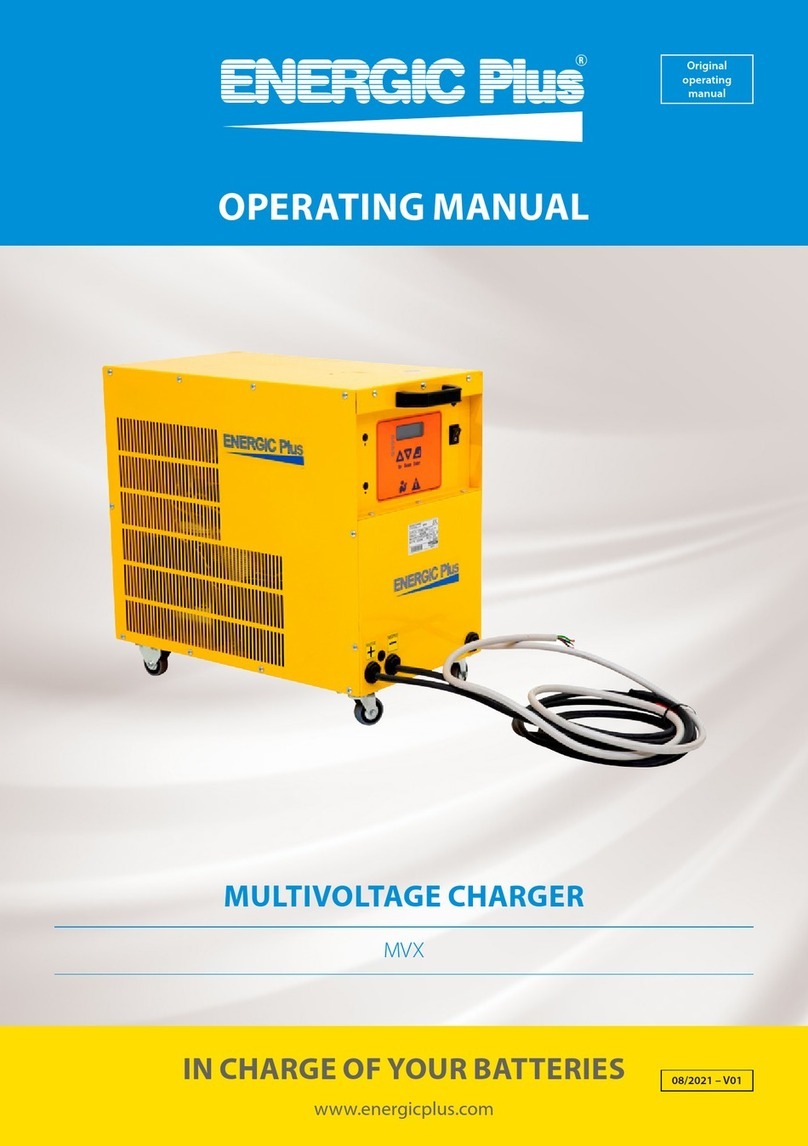
Energic Plus
Energic Plus MVX User manual
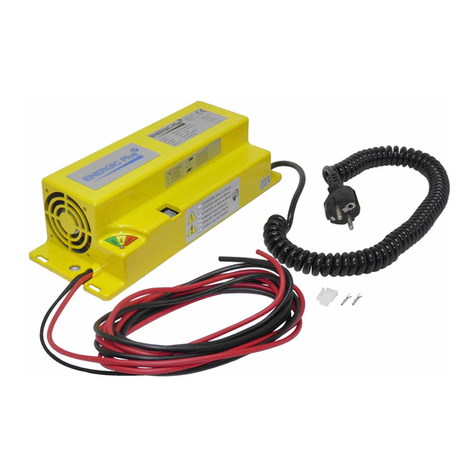
Energic Plus
Energic Plus BC1 User manual
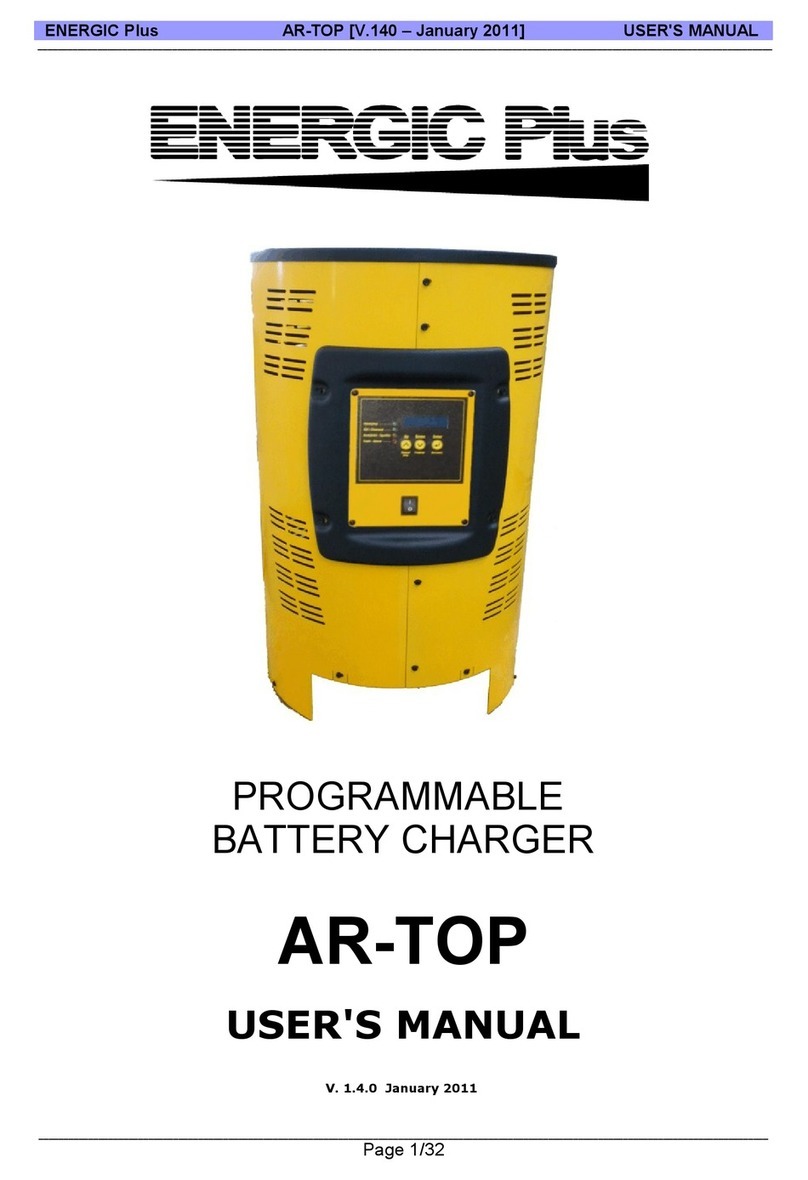
Energic Plus
Energic Plus AR-TOP User manual
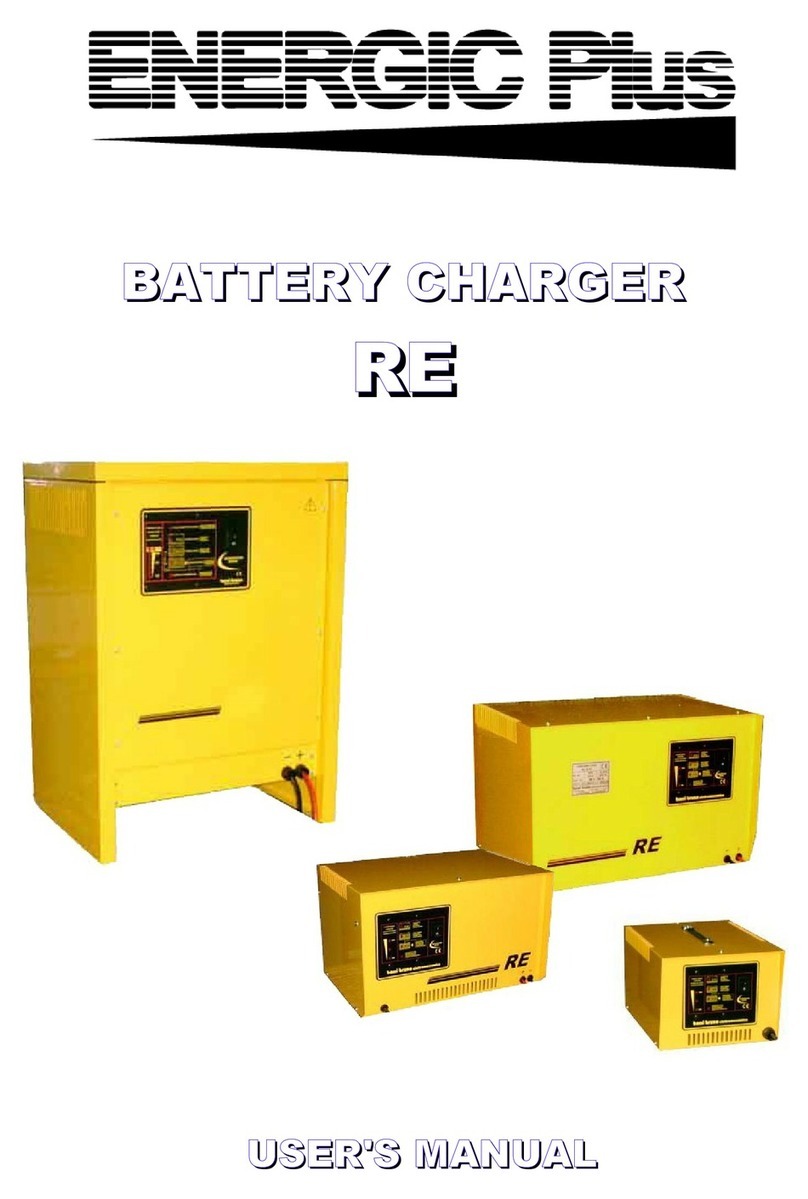
Energic Plus
Energic Plus RE Series User manual
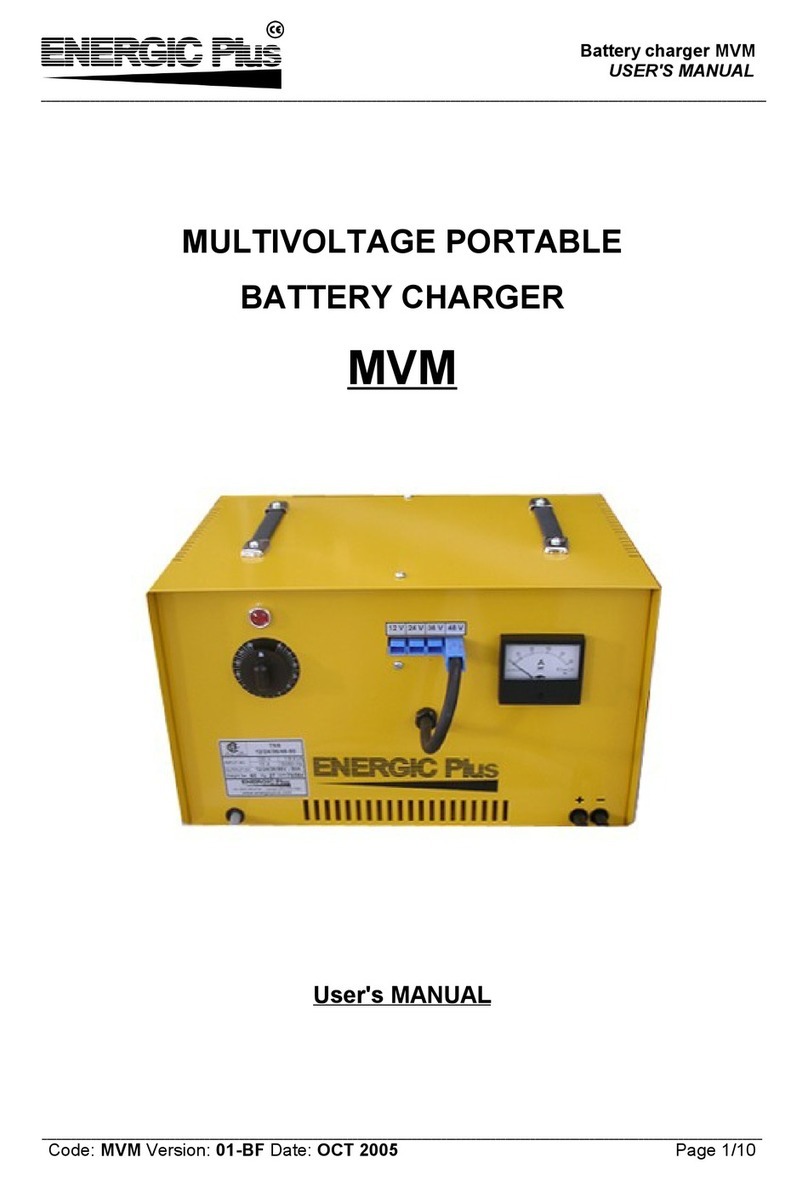
Energic Plus
Energic Plus MVM User manual
